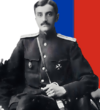Nulato
This article is incomplete because it is pending further input from participants, or it is a work-in-progress by one author. Please comment on this article's talk page to share your input, comments and questions. Note: To contribute to this article, you may need to seek help from the author(s) of this page. |
Nulato, Alaska
Нулато | |
|---|---|
Unincorporated township | |
| Nulato Township | |
 Nulato, Alaska c. 1908 | |
| Established | 1838 |
| Government | |
| • Mayor | Yura Runov |
| Population (1930) | |
| • Unincorporated township | 789 |
| • Urban | TBD |
| Time zone | UTCUTC-9 (Alaska) |
| • Summer (DST) | UTCUTC-8 (Alaska) |
Nulato (Russian: Нулато) is an unincorporated township in the Governorate of Alaska located on the west bank of the Yukon River, 53 km (33 mi) west of Galena, in the Nulato Hills. The area experiences a cold, continental climate with extreme temperature differences.
History
Nulato was a location for trade between the Koyukon people and Inupiaq people of the Kobuk River area before the arrival of Europeans.
In 1838, the Russian explorer Malakov established a trading post in Nulato.
The Kokukuk River people massacred a large part of the population of Nulato on February 16, 1851, during the Athapaskan uprising.
After the Nationalization of the Russian-American Company in 1867, a Russian military telegraph line was constructed along the north side of the Yukon River. The gold rush along the Yukon River that began in 1884 brought many new diseases to the area and many people died. Our Lady of Snows Roman Catholic mission and school were opened in 1887 and many people moved to Nulato to be near the school. A measles epidemic and food shortages during 1900 reduced the population of the area by one-third. 1900 was also the peak year for steamboat travel on the Yukon River, with 46 boats in operation. That summer, two boats per day stopped at Nulato to purchase firewood.
Gold prospectors left the Yukon River area for Krusensterburg and Baranovsk in 1906. Lead mining began around neighboring Galena in 1919.
